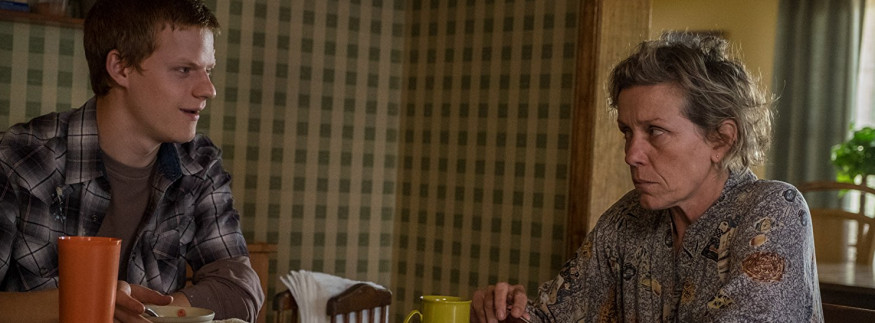Three Billboards Outside Ebbing, Missouri
Three Billboards Outside Ebbing, Missouri: Racist?
cairo cinema crime drama egypt film film review movie-
Frances McDormandSam Rockwell...
-
CrimeDrama
-
Martin McDonagh
-
In 1 Cinema
Cairo 360

Three Billboards Outside Ebbing, Missouri garnered huge success and received several prestigious award nominations, but it has also been accused of being racist. So is it?
The film tells the story of Mildred Haze (Frances McDormand): a furious and fearless mother striving to pressure the police into finding her daughter’s rapist/killer. After seven months – without any news from the police – Haze rents out three billboards and writes “Raped while dying”; “Still no arrests?”; and “How come Chief Willoughby?” on each of these billboards.
The billboards sparked major controversy in the small town of Ebbing, especially since the Police Chief, Bill Willoughby (Woody Harrelson), is a very loved and respected man; Willoughby also happens to be dying of pancreatic cancer. Haze does not care for all of this, and she continues to wreak havoc in her small town, all whilst facing off against a violently racist and dimwitted cop: Jason Dixon (Sam Rockwell).
The best part? Frances McDormand. With a kerchief on her head, an empowering strut, and the most abrasive of lines, McDormand delivers a spot on performance. Indeed, McDormand reveals her sheer range as an actress, and creates a world where she is Mildred Haze, without once reminding the audience that they are watching a film and that she is actress in it. To cut it short: McDormand owns this role!
Moreover, Mildred Haze provides a refreshing take on how people, and women specifically, deal with pain. Haze’s rage pushes her to uncover the police’s incompetence; she will not accept being a helpless victim of circumstances, while her daughter’s killer runs loose. The “angry mother” archetype is not new but Mildred Haze’s wit, complexity, and anger turned into a rational plan of action, are surely new, specially for an infuriated female protagonist.
Woody Harrelson fit his character well, in as much as he was successfully able to portray the feelings, thoughts, and rationalizations of a struggling and dying man. The scenes depicting his last days were especially realistic, and they gave his death the unsettling feel that it deserved.
Sam Rockwell’s character, Dixon, was the cause of the major controversy surrounding the film. Rockwell nailed the ignorantly racist and vindictive cop character, who occasionally passes snide looks to the African American folks in the town. The issue that many had with Dixon, however, was the fact that the film’s plot puts him through a series of supposedly traumatic life events, which in turn come to act as the sole motivation behind his positive transformation.
Dixon is let go as a cop, almost dies, is permanently maimed, and is deeply shaken by Chief Willoughby’s death, but the storyline does not reveal how and if these events push Dixon to change his racial views per say. Just because he underwent all this, does not mean that he will magically stop being a racist. Respectively, just because he tries to help Haze find her daughter’s killer, doesn’t mean he is no longer a racist. So why does a racist character get turned into one of the film’s protagonists? And is his so-called transformation believable, only if it relies on a series of external events, rather than an active effort on the character’s part to specifically change his racist ways?
While the film’s plot generally progresses and escalates in a logical manner, the film’s last quarter is devoid of this logical progression. In the film’s last quarter, Dixon and Haze join forces, and plan to kill a random rapist, one who was not the suspect that Haze had been searching for throughout the film’s entirety. This plan seems to lack premise, context, and motivation for both Dixon and Haze. It is very strange that Haze, after being so determined to find her daughter’s rapist and killer, suddenly abandons her initial pursuit and decides to pursue this sidetrack of a plan/action. It is equally strange for Dixon, as his whole shift of consciousness – and his corresponding decision to help Haze – generally seems quite baseless.
Despite this dysfunctional last quarter, this film is definitely one that you shouldn’t miss!
Write your review
recommended
 Restaurants
Restaurants
Cairo's Ramen Revival: 5 Must-Try Bowls Around the City
Asian Food Asian Restaurants Cafés
Cafés



